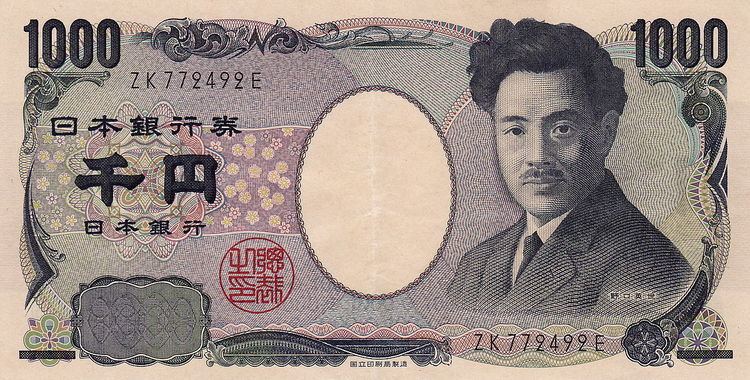Value 1,000 Yen Height 76 mm | Width 150 mm | |
 | ||
Security features Fluorescent ink, intaglio printing, latent imaging, luminescent ink, microprinting, pearl ink, tactile marks, watermark, watermark-bar pattern, EURion constellation Years of printing 1950, 1963, 1984, 2004 (black serial numbers), 2011 (brown serial numbers) Design portrait of Hideyo Noguchi | ||
The 1000 yen note (¥1000) is currently the lowest value yen banknote and has been used since 1945, excluding a brief period between 1946 and 1950 during the American occupation of Japan. The fifth series (series E) notes are currently in circulation having been introduced on 11 November 2004 and are the smallest of the three common bank notes measuring 150 x 76 mm. The front side shows a portrait of Hideyo Noguchi, who in 1911 discovered the agent of syphilis as the cause of progressive paralytic disease. The reverse depicts Mount Fuji and cherry blossoms, adapted from a photograph by Koyo Okada. It was first issued on 1 November 2004.
Extensive anti-counterfeiting measures are present in the banknote. They include intaglio printing, holograms, microprinting, fluorescent ink, latent images, watermarks, and angle-sensitive ink.
